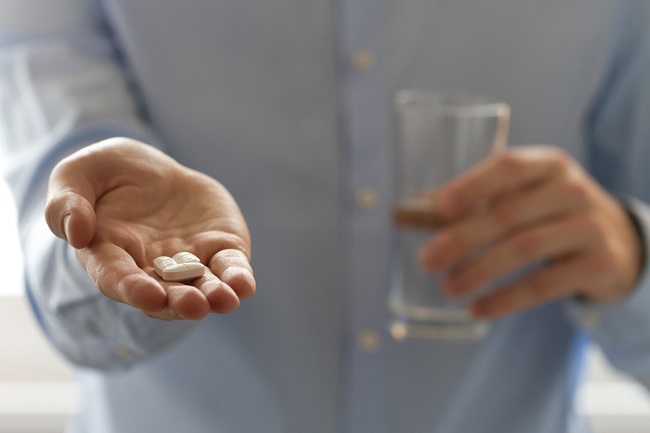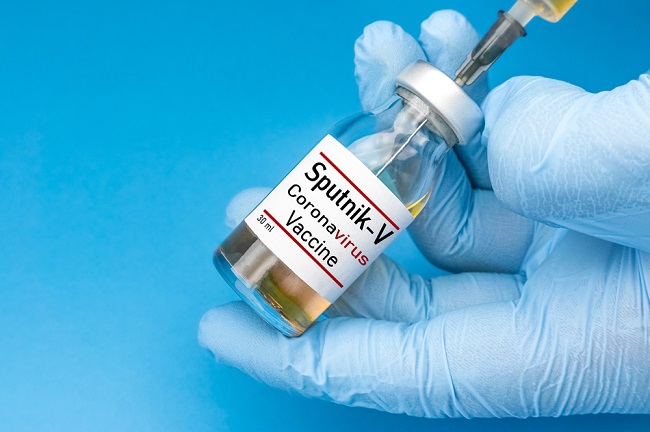Myocarditis is inflammation of the myocardium or heart muscle. This inflammation is generally caused by a bacterial or viral infection. However, in some cases, myocarditis can also occur due to exposure to harmful substances or the use of drugs without a doctor's prescription.
The myocardium is the heart muscle that plays a role in pumping blood from the heart to the rest of the body. Inflammation of the heart muscle can cause a decrease in the heart's ability to pump blood and heart rhythm disturbances. This condition can cause bothersome symptoms, such as chest pain and shortness of breath.

Mild myocarditis can heal more easily, either with or without treatment. However, if it is classified as severe and does not get proper treatment, myocarditis has the potential to cause blood clots that can lead to serious complications, such as stroke and heart attack.
Causes of Myocarditis
Although the cause of myocarditis is often unknown, in the majority of cases, myocarditis is caused by an infection, such as:
1. Virus
Viruses that can cause myocarditis are:
- SARS-CoV-2 (COVID-19)
- Adenovirus
- Hepatitis B and C
- Herpes simplex virus
- Epstein-Barr virus (causes mononucleosis)
- echovirus (cause of gastrointestinal infection)
- Rubella
- HIV
2. Bacteria
Types of bacteria that can cause myocarditis include:
- Staphylococcus (the cause of impetigo, MRSA)
- Streptococcus
- Corynebacterium diphtheriae (cause of diphtheria)
- Clostridia
- Meningococci
- Mycobacteria
3. Parasites
The types of parasites that can cause myocarditis are trypasonoma and toxoplasma.
4. Mushrooms
Fungi that can cause myocarditis are candida, aspergillus, or histoplasma fungi commonly found in bird droppings. Myocarditis caused by fungal infections usually occurs in people with weakened immune systems.
5. Drugs
The use of drugs without a doctor's advice or drug abuse, can cause allergic reactions and poisoning which then triggers myocarditis.
Drugs that can cause myocarditis include chemotherapy drugs, antibiotics (such as penicillins or sulfonamides), and anti-seizure drugs. Meanwhile, the illicit drug that can cause myocarditis is cocaine.
6. Chemicals or radiation
In some cases, a person can develop myocarditis due to exposure to radiation or harmful substances, such as carbon monoxide.
7. Autoimmune disease
Myocarditis can also be triggered by other diseases, such as autoimmune diseases, such as: rheumatoid arthritis and lupus.
Myocarditis Symptoms
Myocarditis that is classified as mild generally does not cause complaints. Conversely, if fairly severe, myocarditis can cause symptoms such as:
- Chest pain
- Shortness of breath, either during activity or at rest
- Heart pounding or beating irregularly
- Swelling in the legs
- Weak
Other symptoms may also occur, depending on the cause of the myocarditis itself. If myocarditis is caused by an infection, other symptoms that may appear are fever, headache, and joint pain.
Meanwhile, myocarditis in children and infants does not have specific symptoms, so an immediate examination by a doctor is required. Signs and symptoms that commonly appear in children and infants with myocarditis are:
- Weak
- Loss of appetite
- Chronic cough
- Stomach ache
- Difficult to breathe
- Fever
- Diarrhea
- Rash
- Joint pain
When to go to the doctor
Check with your doctor if you or your child experience the above symptoms, especially if you have chest pain and shortness of breath. If the symptoms worsen or do not improve within a few minutes, do not delay going to the emergency room of the nearest hospital, to get medical attention immediately.
Myocarditis Diagnosis
First, the doctor will ask questions regarding the patient's symptoms and medical history, then proceed with a physical examination. Furthermore, to confirm the diagnosis, the doctor will carry out supporting examinations, such as:
- Electrocardiography or EKG, to check the electrical activity of the heart
- Chest X-ray, to check the size and shape of the heart, and to check for possible heart failure
- Echocardiography or ultrasound of the heart, to check the pumping function of the heart, and to detect blood clots in the heart, fluid buildup in the lining of the heart (pericardial effusion), heart valve disorders, and an enlarged heart
- MRI of the heart, to see whether there is inflammation in the heart muscle
- Cardiac catheterization accompanied by a biopsy of the heart muscle, to see the condition of the heart and to take a sample from the heart muscle for examination under a microscope
Other tests can also be done as a follow-up examination to find out the cause of myocarditis. For example, blood tests may be done to look for signs of infection or autoimmune disease.
Myocarditis Treatment
In the vast majority of cases, patients with myocarditis make a full recovery. The treatment given will be adjusted to the cause and symptoms that occur. Generally, treatment can also be done independently at home.
In myocarditis caused by bacterial infection, treatment can be done with antibiotics. If myocarditis causes inflammation, corticosteroids may be given to relieve it.
Myocarditis patients are also advised to get plenty of rest, avoid strenuous exercise for at least 3-6 months, and limit salt and water consumption as recommended by the doctor. This is so that the heart does not work excessively, so that it can speed up recovery.
In patients who have experienced complications, such as arrhythmias or heart failure, doctors will recommend hospitalization. The doctor will also prescribe a number of drugs to reduce the risk of blood clots in the heart.
Medicines that can be given by a doctor include:
- ACE inhibitors, such as enalapril, captopril, ramipril, and lisinopril
- Angiotensin II receptor blockers (ARBs), eg losartan and valsartan
- Beta blockers, for example metoprolol, bisoprolol, and carvedilol
- Diuretics, such as furosemide
In severe myocarditis, treatment may include:
1. Infusion of drugs
Giving drugs through an IV is done so that the function of the heart to pump blood can improve more quickly.
2. Ventricular assist devices (VAD)
Ventricular assist devices (VAD) is a mechanical heart pump, which functions to pump blood from the heart chambers throughout the body. VAD is used in patients with heart failure or heart failure.
3. Intra-aortic balloon pump
In this method, a special balloon is implanted in the main artery (aorta). This device serves to increase blood flow and reduce the workload of the heart.
4. Extracorporeal membrane oxygenation (ECMO)
ECMO is a tool that serves to provide oxygen supply to the body, and remove carbon dioxide from the body. ECMO can be performed in patients with myocarditis who already have severe heart failure, or in patients awaiting heart transplantation.
5. Heart transplant
A heart transplant is a procedure to replace a patient's heart that has been severely damaged with a healthy heart from a donor. Although it can be used to treat severe myocarditis, this procedure is not yet available in Indonesia.
Myocarditis Complications
If not treated immediately, myocarditis can cause permanent damage to the heart muscle. As a result, sufferers can develop serious complications, such as:
- Heart rhythm disturbances
- Heart attack and stroke
- Heart failure
- Sudden cardiac arrest
Although rare, myocarditis can also cause inflammation of the lining of the heart (pericarditis) and changes in the structure of the heart muscle (cardiomyopathy), which can result in a permanent decrease in heart function.
Myocarditis Prevention
Until now, it is not known how to prevent myocarditis. However, the risk of developing myocarditis can be reduced by taking steps to prevent infection, such as:
- Always maintain personal hygiene, food and place to live
- Get vaccinated according to doctor's advice
- Avoid contact with someone who is sick
- Have sex in a healthy way, namely by wearing a condom and not changing partners
In addition, avoid the use of illegal drugs and use drugs from the doctor with the dosage and method of use as recommended.









